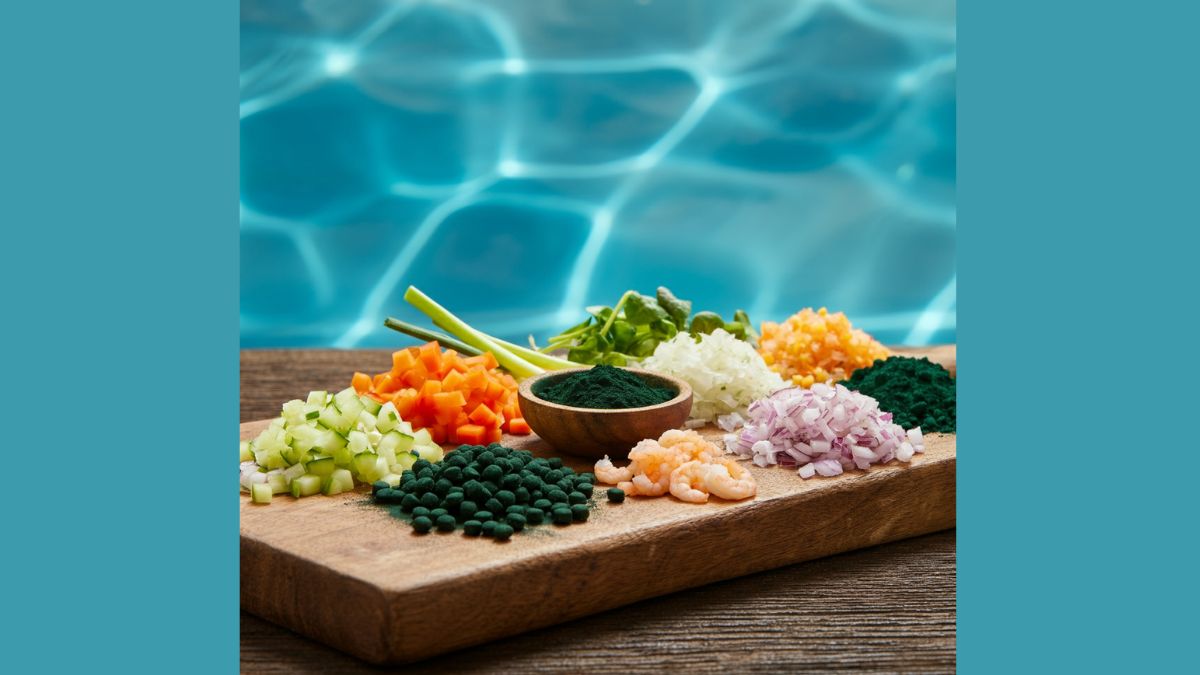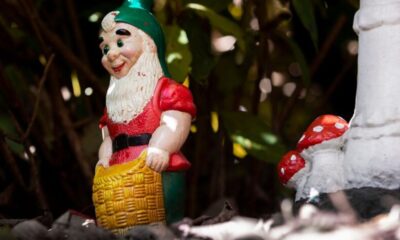FOOD
Fish Food Recipe: Create Nutritious Meals for Your Fish

Feeding your aquatic pets isn’t just about keeping them full — it’s essential to their health, growth, and longevity. However, store-bought fish food often contains preservatives, low-quality ingredients, and additives that don’t match the precise needs of your beloved finned friends. That’s why more fish owners are turning to homemade fish food recipe.
Creating your own fish food allows you to provide tailored nutrition free of unnecessary chemicals, often at a lower cost. This blog explores everything you need to know about making nutritious homemade meals for your fish, from understanding their dietary requirements to crafting nutrient-packed recipes.
Whether you’re raising ornamental species like bettas and guppies or maintaining larger tanks with cichlids and goldfish, this guide will equip you with the knowledge to enhance your fish’s well-being through quality, homemade meals.
Why Consider Homemade Fish Food?
Although convenient, commercial fish foods may not always meet the nutritional needs of your fish. Here’s why making your own fish food can be beneficial:
1. Control Over Ingredients
When you prepare fish food at home, you control what’s included. Choose high-quality, fresh ingredients to ensure your fish get only the best nutrients.
2. Tailored Nutrition
Different species of fish have unique dietary needs. For example, herbivorous fish need plant-based diets, while carnivorous species thrive on protein-rich meals. Homemade food allows you to customize recipes to fit these needs.
3. Cost-Effective
Homemade fish food often uses affordable, everyday ingredients like vegetables, seafood, or poultry. It’s a long-term investment that reduces reliance on pricey store-bought alternatives.
4. A More Natural Diet
Replicate the natural diets of your fish by preparing food that closely resembles what they’d eat in the wild, promoting healthier growth and behavior.
Understanding Your Fish’s Dietary Needs
Before grabbing your apron and blender, it’s essential to study your fish’s nutritional requirements based on their species and feeding habits. Fish diets generally fall into three categories:
Herbivores
Plant-eating fish like plecos, certain cichlids, and mollies benefit from a diet rich in algae, aquatic plants, and vegetables such as spinach or peas. Protein should form only a small percentage of their diet.
Carnivores
Carnivorous fish such as bettas, arowanas, and oscars require diets high in protein. Their ideal menu includes lean meats, live insects, brine shrimp, or frozen fish.
Omnivores
Most aquarium fish, including guppies, tetras, and goldfish, are omnivores, meaning they need a balanced mix of plant-based and protein-rich food to thrive.
Once you understand their diet, you can begin crafting nutritious recipes to meet their specific needs.
Steps to Creating Homemade Fish Food
Follow these steps to prepare nutritionally rich Fish Food Recipe at home:
Step 1: Gather Fresh Ingredients
Choose ingredients based on your fish’s dietary category:
- For Herbivores: Blanched spinach, peas, lettuce, cucumbers, seaweed, and algae wafers.
- For Carnivores: Frozen shrimp, fish liver, lean chicken, bloodworms, and mealworms.
- For Omnivores: A mix of leafy greens, seafood proteins, and a small amount of grains like oats.
Step 2: Blend the Ingredients
Use a blender or food processor to mix the ingredients into a paste. This ensures the nutrients are evenly distributed throughout the mixture.
Example Recipe for Herbivorous Fish
- 1 cup blanched spinach or kale (chopped)
- 2 teaspoons spirulina powder
- ½ cup cooked peas (deshelled)
- ¼ cup zucchini (blended)
- Gelatin or agar powder (to bind the mixture)
Blend the ingredients into a smooth consistency.
Step 3: Add a Binding Agent
Add gelatin or agar powder to the mix to bind the ingredients. The binding agent ensures that the homemade food holds its shape when introduced into the water.
Step 4: Shape & Freeze
Once the mix is prepared, pour it into molds or spread it out on a baking sheet to cool. Freeze the prepared fish food and cut it into bite-sized portions as needed.
Storage Tips for Homemade Fish Food
Refrigeration: Store smaller batches in the refrigerator for daily use.
Freezing: Freeze the majority of the prepared Fish Food Recipe for long-term storage. Frozen portions can last up to 2 months.
Use Airtight Containers: Prevent moisture and contamination by sealing stored Fish Food Recipe’s in airtight containers or freezer bags.
Feeding Guidelines
Overfeeding can harm both your fish and the tank’s water quality. Follow these feeding guidelines to ensure a healthy balance:
- Feed only what your fish can eat in 2-3 minutes.
- Offer a variety of foods throughout the week to provide a balanced diet.
- Test the waters! Observe how your fish respond to the homemade food and adjust where necessary.
Engage with a Thriving Fishkeeping Community
Creating your own Fish Food Recipe’s is also an invitation to join the larger aquarist community. Fellow fish enthusiasts often exchange tips, troubleshoot common issues, and share their favorite recipes. Beyond improving your fish’s diet, it’s an excellent way to enhance your experience as a fish keeper.
Final Thoughts
Enhancing your fish’s diet through homemade recipes isn’t just a fulfilling task—it’s a step toward ensuring their health, happiness, and longevity. By controlling the ingredients, tailoring meals, and reducing costs, you contribute to a thriving and vibrant aquarium ecosystem.
Take the first step today by experimenting with a simple, fresh recipe tailored to your fish’s needs. Trust us, they’ll thank you with brighter colors and playful activity in the tank.

-

 PET5 months ago
PET5 months agoSearching for an Owl for Sale in Karachi? Here’s What You Need to Know
-

 BLOG5 months ago
BLOG5 months agoGemmy 6′ Airblown Inflatbale Minions Carrying Candy Cane Scene: A Fun Holiday Decoration
-

 CRYPTO5 months ago
CRYPTO5 months agoLessInvest.com Crypto Strategies for Beginners
-

 TECH5 months ago
TECH5 months agoBiitland.com Crypto A Gateway to Secure and Stable Digital Assets
-

 NEWS5 months ago
NEWS5 months agoUnlocking the Power of Backlinks and Referring Domains with BeforeItsNews.com
-

 HEALTH5 months ago
HEALTH5 months agoMega-Personal.net Health Archives: Making Smarter Healthcare Decisions
-

 NEWS5 months ago
NEWS5 months agoEthan Sterling News: Key Updates, Insights & Analysis
-

 HEALTH5 months ago
HEALTH5 months agoMental Health Matters Hoodie – Forest Green